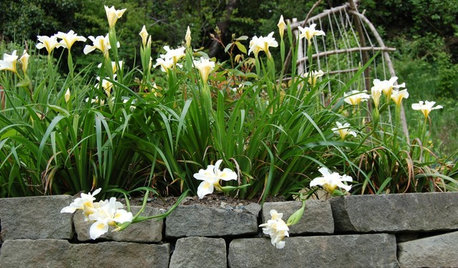Pacific Wax Myrtle or other hedge to replace Photinia
nate77
16 years ago
Related Stories

GARDENING GUIDESTop 10 Native Plants for the Pacific Northwest
More than just gorgeous and adaptable, these standout plants convey a sense of place
Full Story
GARDENING GUIDES10 Solutions for Soggy Soil
If a too-wet garden is raining on your parade, try these water-loving plants and other ideas for handling all of that H2O
Full Story
GARDENING GUIDES5 Best-Behaved Trees to Grace a Patio
Big enough for shade but small enough for easy care, these amiable trees mind their manners in a modest outdoor space
Full Story
SIDE YARD IDEASNarrow Trees for Tight Garden Spaces
Boost interest in a side yard or another space-challenged area with the fragrance and color of these columnar trees
Full Story
GARDENING GUIDESGreat Design Plant: Sambucus Nigra
Common elderberry is a highly adaptable shrub from the eastern U.S., with berries galore for wildlife and humans alike
Full Story
GARDENING FOR BIRDSFeed the Birds: 6 Plants for Abundant Winter Berries
Be kind to your fair feathered friends during lean food times by planting a shrub or tree loaded with nutritious snacks
Full Story
GARDENING GUIDES8 Deer-Resistant Elegant Evergreen Shrubs to Plant This Fall
Who knew that such beautiful shrubs could be deer-resistant?
Full Story
LANDSCAPE DESIGNSmall Garden? You Can Still Do Bamboo
Forget luck. Having bamboo that thrives on a wee plot just takes planning, picking the right variety, and keeping runners in check
Full Story
GARDENING AND LANDSCAPINGGrow a Lush Privacy Screen
No need to wait forever for patio privacy the green way. These 10 ideas will get your screening up and running in no time
Full Story
LANDSCAPE DESIGNThe 7 Best Plant Types for Creating Privacy and How to Use Them
Follow these tips for using different kinds of plants as living privacy screens
Full Story







cascadians
Embothrium
Related Professionals
Havre de Grace Landscape Architects & Landscape Designers · Zion Landscape Architects & Landscape Designers · Duarte Landscape Contractors · Franklin Landscape Contractors · The Villages Landscape Contractors · Weymouth Landscape Contractors · Whittier Landscape Contractors · Phoenix Fence Contractors · Overlea Fence Contractors · Chaska Fence Contractors · New Haven Fence Contractors · North Miami Beach Fence Contractors · Saint Louis Park Fence Contractors · Salt Lake City Fence Contractors · Wilmette Fence Contractorsnate77Original Author
Embothrium
sea_jen
reg_pnw7
gardengal48 (PNW Z8/9)
Embothrium
kristincarol
cascadians
vince707
Embothrium